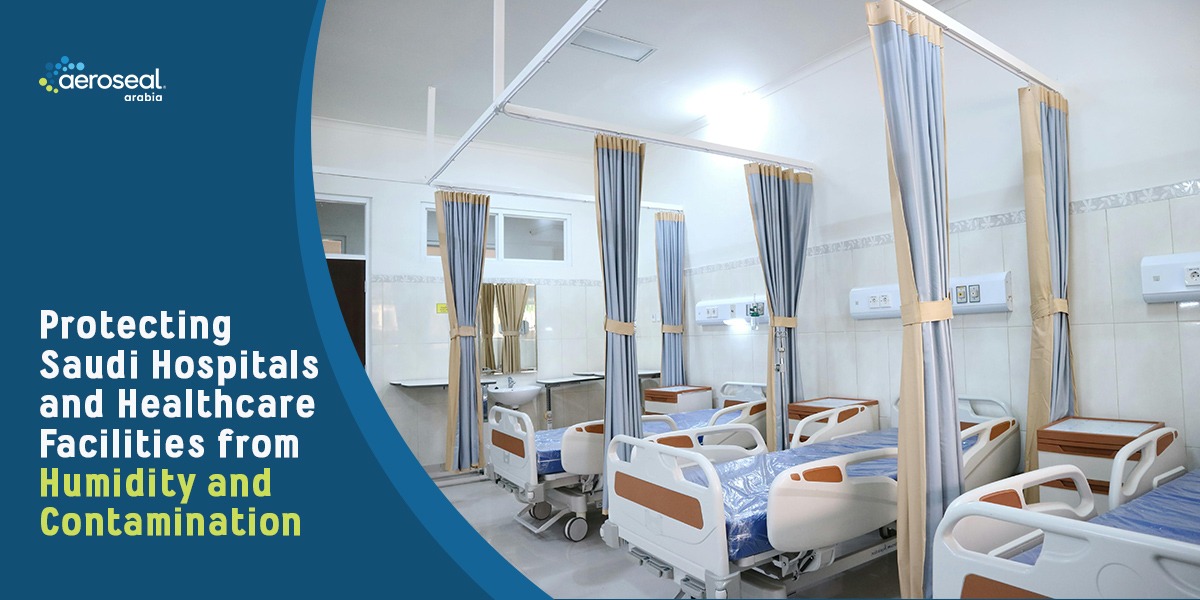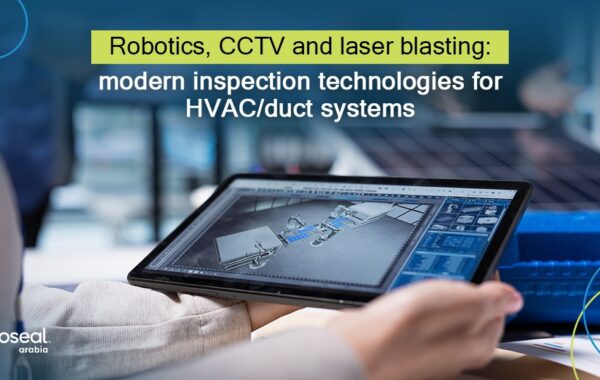
Protecting Saudi Hospitals and Healthcare Facilities from Humidity and Contamination
Humidity and air contamination are invisible threats that quietly affect the safety and hygiene of healthcare facilities. In Saudi Arabia, where Vision 2030 focuses on advanced healthcare and sustainable buildings, controlling indoor humidity and air quality is essential. Hospitals must provide safe environments for patients and staff while ensuring their buildings meet strict health and safety codes.
The Hidden Impact of Humidity in Healthcare Environments
Even a small amount of unwanted humidity can lead to serious problems in hospitals. When humid air enters through gaps in walls, ceilings, or ductwork, it can create ideal conditions for mold growth, corrosion, and bacteria. Over time, this affects the reliability of medical equipment and compromises the sterility of surgical and patient care areas.
According to the World Health Organization (WHO), high indoor humidity promotes microbial contamination and respiratory illnesses. In hospitals, where patients are already vulnerable, this becomes a critical risk. Maintaining precise humidity levels is not just about comfort it is about infection prevention and patient safety.
How Poor Air Quality Affects Indoor Health
Unsealed ducts and building leaks allow outdoor pollutants and unfiltered air to enter hospital systems. This air often carries dust, allergens, and airborne pathogens that move freely through the ventilation network. The result can be higher rates of hospital-acquired infections, unpleasant odors, and reduced comfort for staff and patients.
In Saudi hospitals, HVAC systems play a key role in maintaining sterile environments. However, when ducts are leaky or not properly sealed, these systems lose control over humidity, pressure, and airflow. This leads to uneven temperatures, greater contamination risks, and higher energy use.
Sealing Technology: The Key to Humidity Control
The most effective way to manage humidity and air quality together is through airtight construction and advanced air sealing. Technologies like Aeroseal are transforming how hospitals manage their indoor climate. Aeroseal works from inside the duct system, using a safe, water-based sealant to close invisible leaks without interrupting hospital operations.
Once the ducts and building envelope are sealed, humidity remains stable, filtration becomes more efficient, and energy systems work at peak performance. This creates a cleaner, safer, and more comfortable environment for everyone inside the facility.
Benefits of Air Sealing for Saudi Hospitals
- Improved infection control: By sealing leaks, airborne bacteria and spores are less likely to spread through ventilation systems.
- Better humidity management: Proper sealing prevents condensation and mold growth in walls, ceilings, and HVAC ducts.
- Greater energy efficiency: When the system operates without leaks, it uses less energy and lowers operational costs.
- Extended equipment life: Reduced exposure to humidity and corrosion protects sensitive medical tools and electronic systems.
- Enhanced comfort and safety: Consistent air quality and stable temperatures make hospital environments more comfortable for patients and healthcare workers alike.
Combining air sealing with regular maintenance ensures hospitals operate efficiently, sustainably, and safely for years to come.
Supporting Saudi Vision 2030 and Building Code Standards
Saudi Vision 2030 highlights sustainable, efficient, and health-focused infrastructure. The Saudi Building Code (SBC) and ASHRAE standards both emphasize the importance of humidity control, indoor air quality, and energy performance three factors essential in healthcare facilities.
By implementing advanced air sealing and humidity management systems, Saudi hospitals can align with national health and environmental goals. They not only comply with safety regulations but also demonstrate leadership in patient care and operational excellence.
Conclusion
Protecting Saudi hospitals and healthcare facilities from humidity and contamination requires more than routine cleaning. It demands a precise, proactive approach to air management. Technologies like Aeroseal offer an innovative solution that improves indoor air quality, reduces infection risks, and enhances energy efficiency.
When hospitals maintain the right balance of air and humidity, they create safer, healthier spaces for patients, medical teams, and visitors. A well-sealed building is not just a structure it is a vital part of Saudi Arabia’s vision for a healthier, more sustainable future.



